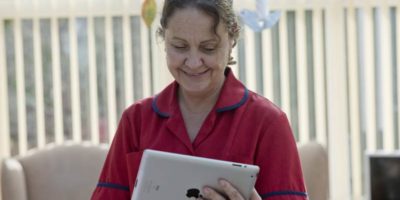Your Questions Answered: “My manager has told me to find better ways of recording our activities for the CQC. What are the most important and best ways of doing that?”
Firstly, it’s important to remember that while you must be able to evidence both individual and group activities for your regulator (wherever you are in the UK), inspectors will base their main judgement on what is happening for everyone in your care home on the day(s) of inspection. They will ask people who live in your care community how they spend their days, ask visitors about the quality of activity provision and look for signs of well-being based on their observations using the Short Observational Framework for Inspection (SOFI).
Keeping records is essential. They don’t have to be extensive but they do need to capture the engagement and meaningful activity each person has experienced each day – whether that is a chat with the care staff as they provided personal care, or at each mealtime, or a response to a formal or informal activity. The inspectorate are looking to see that each person has access to meaningful engagement with people each day and at different points in the day. You may find it helpful to give staff some examples of the sorts of simple things they might add to their daily records that reflect these interactions and bring meaning to people’s lives.
Ideally, each person receiving care should have an individual lifestyle/activity/well-being plan, most commonly this will be in the format of a care plan and should reflect elements of their life history, lifestyle preferences and preferred routines (this shows the inspectors you are being responsive to the individual, or ‘person centred’).
It helps to have an assessment of people’s level of ability (PAL or other ability/well-being measure). These need to be updated regularly (monthly is best), to reflect changes in ability and response to different activities. It is helpful to set goals with people, for example: Mary may have had a fall and is now returning from hospital, she is keen to be able to regain her mobility but is fearful. By working with Mary and her carers you could set a series of goals and a therapeutic mobility/exercise plan to get Mary confident about walking again.
Used well, the daily records are a good indicator of the ‘whole-home approach’, which is the approach that most commonly achieves OUTSTANDING ratings from the regulators. Monitoring the number of interactions is a useful way of establishing if everyone is getting quality engagement. If you don’t already have a form for recording group and one-to-one activity, NAPA have a well-designed form, or you may want to talk to other activity/lifestyle/well-being coordinators to find out what they use.
Finally, review and evaluate regularly so that you can show what you are achieving and how this is improving the lives of the residents, and what else you need to do. Have a plan for completing elements like lifestyle, life-story and individual lifestyle/activity plans if you don’t have them in place yet so that you can show the inspectors what you are doing and how you plan to move things forward. Show them the ones you have completed and the outcomes that have been achieved.
Finally, don’t be afraid of the inspection team, be proud of what you do and ensure you have the evidence of what you and your teams do and the benefit it has on the people in your community.




